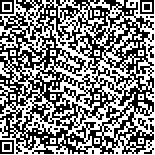本文已被:浏览 4224次 下载 6538次
投稿时间:2017-03-27
投稿时间:2017-03-27
中文摘要: 基础设施互联互通是“一带一路”建设的优先领域。“中欧班列”是欧亚大陆货物运输新的渠道和基础设施“互通”的重要举措,已成为“一带一路”建设的标志性运输合作平台。文章在阐释“中欧班列”运营的战略意义和存在问题后,提出如何正确认识这种新的运输方式,指出“中欧班列”在我国对外贸易运输中的地位与作用有限,只适用于远离东部沿海港口的中西部地区以及国际大通道沿线地区,且在合理的地域范围内运输适宜的货物,才能盈利。最后,作者提出构建轴-辐组织模式,打造关键货物集散枢纽,统筹规范组织“中欧班列”,以降低“中欧班列”的运输成本,从而产生规模经济。
Abstract:Connectivity of infrastructure is a priority component of China's Belt and Road Initiative. As an important achievement of such connectivity and a symbolic co-transport platform, China-Europe Express Train (CEET), organized and operated by Chinese local government, has become a new way for cargo transportation among China, Central Asia, and Europe. This paper first analyzes the significance of CEET as well as its problems, and then raises two view points to correctly understand CEET, that is, CEET plays a limited role in the shipment of China's imported and exported commodities, and this transport model can achieve profit only if selective goods (e.g., high-value and low-weight goods) are shipped to appropriate locations (e.g. the hinterland of the Eurasian Continent). In fact, the CEET accounts for only a tiny share of China's international trade cargo. In the end, the paper suggests to adopt a hub-and-spoke mode and set up a few transport hubs as well as foster the brand of "China Railway Express" to cut costs and improve efficiency.
keywords: China-Europe Express Train (CEET) international land transport the Belt and Road Initiative infrastructure connectivity huband-spoke
文章编号: 中图分类号: 文献标志码:
基金项目:国家自然科学基金(41371143),中科院地理科学与资源所特色所培育建设项目(“一带一路”建设决策支持研究),中科院青年创新促进会资助项目
引用文本:
王姣娥,景悦,王成金.“中欧班列”运输组织策略研究[J].中国科学院院刊,2017,32(4):370-376.
Wang Jiao'e,Jing Yue,Wang Chengjin.Study on Better Organization of China-Europe Express Train[J].Bulletin of Chinese Academy of Sciences,2017,32(4):370-376.
王姣娥,景悦,王成金.“中欧班列”运输组织策略研究[J].中国科学院院刊,2017,32(4):370-376.
Wang Jiao'e,Jing Yue,Wang Chengjin.Study on Better Organization of China-Europe Express Train[J].Bulletin of Chinese Academy of Sciences,2017,32(4):370-376.


